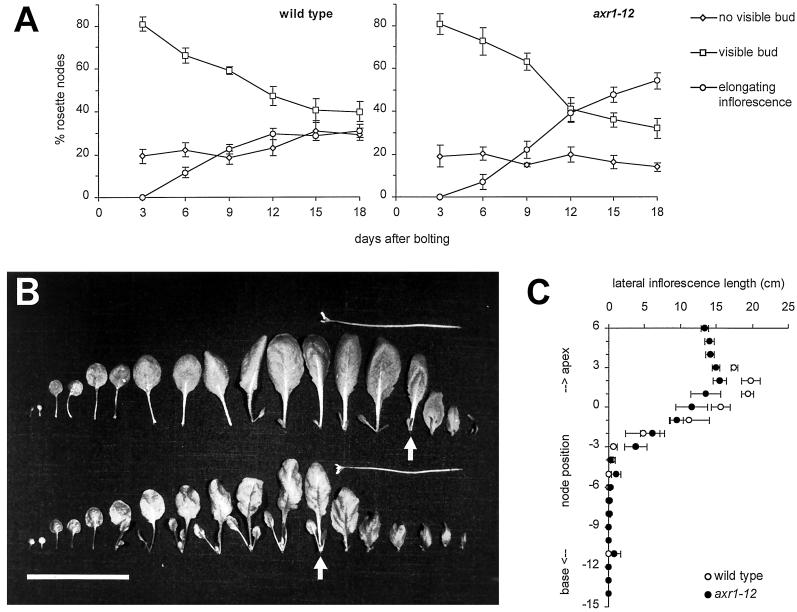Figure 1.
Morphometric analysis of lateral shoot development of wild-type and axr1-12 plants grown in long photoperiods. A, Time course of lateral shoot development in rosette leaf axils. For each genotype, five to eight plants were sampled every 3 d between d 3 and 18 after bolting of the primary inflorescence, and their rosette leaf axils were examined. Lateral shoot development was scored into three developmental stages (no visible bud [⋄]; visible bud [□]; and elongating inflorescence [○]), and the proportion of laterals at each stage calculated for each plant. The mean proportions ± se for each time point are plotted. B, Lateral shoot development at consecutive nodes along the primary shoot axis, 6 d after bolting. For one wild-type (upper row) and one axr1-12 plant (lower row), cotyledons and leaves were dissected from the primary shoot axis with their attached axillary shoots and laid out in the sequence in which they developed (left to right = base to apex). The uppermost rosette leaves are marked by arrows. Bar = 5 cm. C, Mean lateral inflorescence lengths ± se at consecutive nodes along the primary shoot axis 18 d after the primary inflorescence started bolting. Five plants were analyzed for each genotype (wild type [○]; axr 1–12 [●]). Lateral inflorescence lengths for axils without a visible bud or with a vegetative bud were scored as zero. As the mean number of cauline leaves was 3 for wild-type and 6 for axr1-12 plants, plots for wild type were started three node positions basal from those of axr1-12. Thus, node position 0 represents on average the uppermost rosette leaf for both genotypes.

